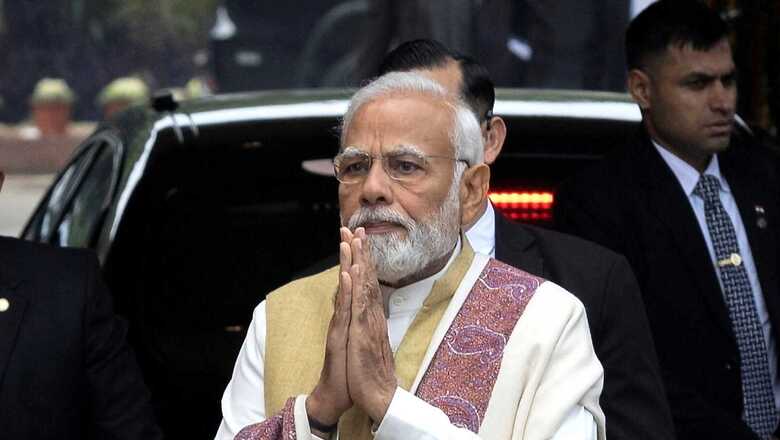
views
For a long time, people in India, and outside, argued that there are ‘two Indias’. India, and Bharat, ostensibly the poorer cousin of India. Some argued against this, talking about all kinds of ‘bridges’ between the two, highways, high-speed trains, airports everywhere, and high-speed Internet coupled with smartphones.
But the idea of the divide had persisted and in Budget 2023, what we have seen is a push towards collapsing that divide and focusing on not making Bharat India, but the reverse, making India Bharat. Not by making it poor but by taking it closer to its indigenous roots.
Note the following announcements in the budget — the extension of free food for those households which need it the most, expanding of the ‘aspirational districts’ programme to go more granular, at the block level, to ensure that basic goods of governance in health, nutrition, education, agriculture, water resources, financial inclusion, skill development, and basic infrastructure are provided, governance delivery focussed on vulnerable tribal groups, and hundreds of new schools focussed on tribal students.
This, along with the introduction of Eklavya Model Residential Schools, which in the next three years, shall recruit 38,800 teachers and support staff for the 740 Eklavya Model Residential Schools, serving 3.5 lakh tribal students, is likely to change the face of ‘tribal India’. About 8.6 percent of the Indian population falls under ‘scheduled tribes’ according to the 2011 census. Sickle cell anaemia is a critical disease that affects tribal areas, and there is a new plan in the budget to create awareness about this disease and eliminate it by 2047 through screening 7 crore people between the age group of 0-40 years.
Why is this important? The internal threat to India’s sovereignty comes from the spread of the idea of divisiveness and one of the best examples of this has been the historic capture of tribal areas by ultra-Left Maoist groups fighting a war with the Indian government. There have also been issues of coercive conversions in tribal areas. Such issues threaten India’s sovereignty, until a few years ago, in the era of the Manmohan Singh government, the gravest threat to India’s unity and sovereignty was adjudged to have been its internal conflicts, most importantly with the Maoists. Therefore, the focus on tribals, and tribal areas, is very welcome.
This budget also pushes the use of millets and a transition towards less chemical-laden ‘natural’ farming processes and aims to move 10 million (1 crore) farmers to natural farming in the next three years. The budget provisions the launch of the PM Program for restoration, awareness nourishment and amelioration of mother earth (PM PRANAM) to promote alternative fertilizers and balanced use of chemical fertilizers. It emphasises the importance of wetlands by roping in local communities to promote conservation through the Amrit Dharohar Scheme.
For fisherfolk and people in related areas, there is a new scheme under PM Matsya Sampada Yojana worth Rs 6,000 crores to further enable activities that improve value chain efficiency, while millets, of which India is the largest producer and second-largest exporter, with get a research and innovation boost via the budget with the institute in Hyderabad that is at the forefront of this research getting a ‘centre of excellence’ stamp.
Further investments in the railways, which have increased nine-fold since 2013-14, expand the most affordable mode of transport in the country and one that is melting away the gulf between the hinterland and the metropolis. The push to organisations like the National Book Trust, and The Children’s Book Trust to provide non-curricular books in regional languages is a further effort towards de-cosmopolitanising the advantages of India’s growth.
Perhaps the most important, in my opinion, effort and one that seeks to eliminate the national humiliation that we face each time a worker dies while cleaning a manhole is the budgetary provision to enforce 100 per cent mechanical desludging of septic tanks “to transition from man-hole to machine-hole mode”. This transition is perhaps one of the most vital on sheer humanitarian grounds. This budget ensures that India cannot glibly look away anymore.
The writer is a multiple award-winning historian and author. Views expressed are personal.
Read all the Latest Opinions here


















Comments
0 comment